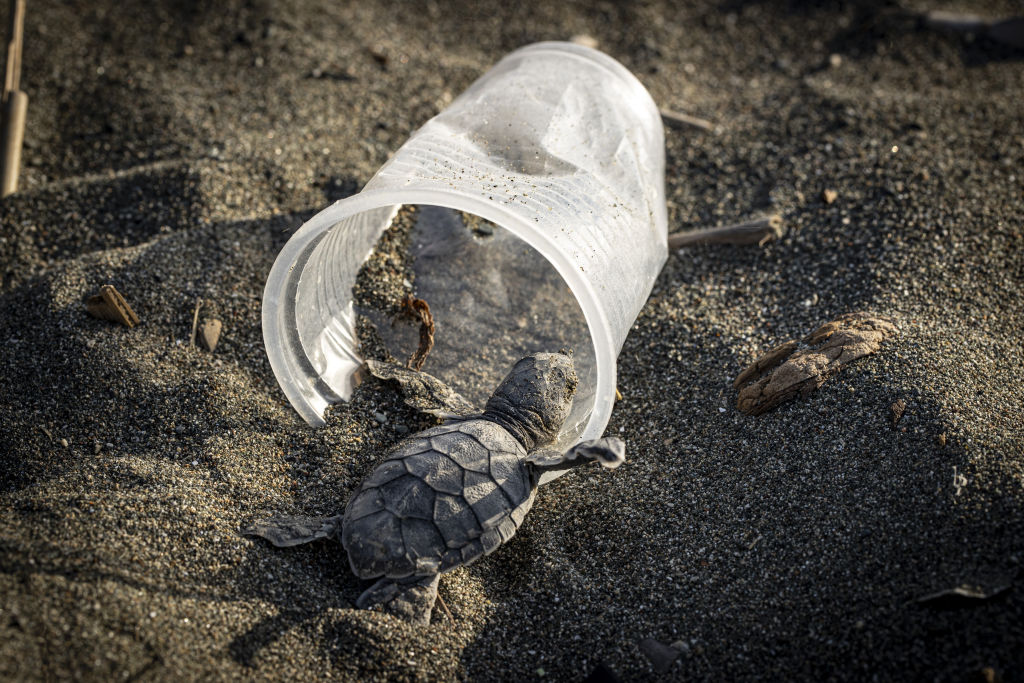---------------------------------------

The ocean is awash with plastic—more than 171 trillion pieces, scientists have estimated, and growing all the time. Animals get tangled in plastics or swallow them, the chemicals released by the stuff are often toxic, and once the plastic is inside a creature, it can stay inside of it, potentially blocking its airways or intestines.
A binding global treaty regulating the manufacturing and disposal of plastic could help change the situation. While the last round of negotiations on such a treaty ended inconclusively in August 2025, that hasn’t stopped scientists from thinking about how it could work. A treaty will benefit from numbers, backed up by evidence, of how much plastic is lethal to sea life, and so a team of researchers publishing in the journal Proceedings of the National Academy of Sciences have examined the results of more than 10,000 animal autopsies of sea turtles, seabirds, and sea mammals. They found that while the definition of a lethal amount of plastic may vary among creatures, the numbers are often frighteningly small.
[time-brightcove not-tgx=”true”]
Drawing on reports of more than a century’s worth of animal deaths, the researchers determined both how much plastic creatures had ingested and whether that plastic was the cause of their death. Then they calculated how much plastic was linked to a 50% chance of death, and how much was linked to a 90% chance of death, says Erin Murphy, the manager of ocean plastics research at the Ocean Conservancy and a co-author of the study. They also looked at different types of plastics to see which are most dangerous to different animals.
“I was surprised by some of the thresholds we found,” says Murphy. Using the team’s calculations, if a bird the size of an Atlantic puffin had eaten a bit less than 3 sugar cubes worth of plastic, it had a 90% chance of having died from an exposure to plastic. For a Loggerhead sea turtle, the amount would be about as big as a pair of baseballs.
Read More: What Happens to the Plastic in Single-Serve Coffee Pods?
Rubber materials are particularly dangerous for birds, the team found. “For seabirds, just six pieces of rubber, such as a balloon—each smaller than the size of a pea on average—are 90% likely to cause death,” says Murphy. (Although rubber can be a natural product, much of the rubber used today is synthetic and could be regulated by a plastics treaty.)
The analysis focused on situations where plastic was clearly at fault for the animal’s death—where it was blocking their airway, rupturing their stomach, or causing a tear in their intestines, for instance. It is likely that plastic causes other, less obvious problems for sea creatures, such as making them feel full even if they haven’t eaten enough to survive.
“It’s a sad and difficult thing to think about, but it’s also a reminder that everyone can be part of the solution,” says Murphy. “And if we’re going to really address this problem, the science is clear. We need to reduce the amount of plastic that we produce, improve collection and recycling, and clean up what’s already out there, and that’s really something that every person can be involved in.”
To reduce plastics in your life, consider using solid bars of shampoo and conditioner instead of buying plastic bottles, buy loose fruits and vegetables rather than those packaged in single-use plastic, and beware of plant-based alternative plastics—they are often not as environmentally friendly as you might hope.
And pick up plastics you see on your daily walk, Murphy suggests. Every piece that gets to the right place is one less piece that might end up in a sea turtle.
-----------------------------------------
By: Veronique Greenwood
Title: This Small Amount of Plastic Is Enough to Kill a Sea Turtle
Sourced From: time.com/7334630/plastic-pollution-sea-turtle/
Published Date: Tue, 18 Nov 2025 14:38:54 +0000
Read More
 General Health and WellnessFitness and ExerciseSupplements and VitaminsPandemic NewsVideosPrivacy PolicyTerms And Conditions
General Health and WellnessFitness and ExerciseSupplements and VitaminsPandemic NewsVideosPrivacy PolicyTerms And Conditions
